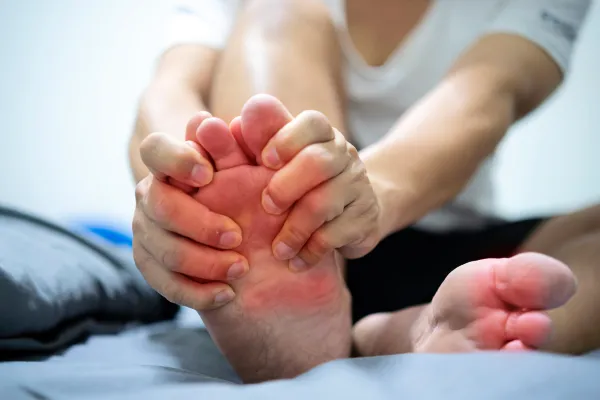
What is Metatarsalgia? Understanding the Pain in Your Feet
Have you ever felt a sharp, burning pain in the ball of your foot? If so, you might be experiencing a condition called metatarsalgia. But what exactly is metatarsalgia, and why does it cause such discomfort?
What is Metatarsalgia?
Metatarsalgia is a term used to describe pain and inflammation in the ball of the foot, which is the area beneath the metatarsal bones. These bones are located in the forefoot and connect to the toes. Essentially, metatarsalgia means "pain in the metatarsals," and it can make walking, running, or even standing quite uncomfortable.
Symptoms of Metatarsalgia
The symptoms of metatarsalgia can vary from person to person, but they generally include:
Sharp, burning pain: This pain is often felt in the ball of the foot and can be particularly intense when walking or standing for long periods.
A sensation of having a pebble in your shoe: You might feel like there’s something stuck in your shoe, even though there's nothing there.
Swelling and tenderness: The area around the ball of the foot may become swollen and sensitive to touch.
Pain that worsens with activity: Activities that involve bearing weight on your feet, such as running or walking, can exacerbate the pain.
Causes of Metatarsalgia
Understanding the causes of metatarsalgia can help you manage and prevent it. Some common causes include:
Improper Footwear: Wearing shoes that are too tight, too loose, or have high heels can put excessive pressure on the metatarsal area. Shoes that lack proper arch support can also contribute to the problem.
Overuse: Engaging in activities that put repetitive stress on your feet, such as running or dancing, can lead to metatarsalgia.
Foot Structure Issues: Conditions like high arches or flat feet can alter the way weight is distributed across your feet, leading to increased pressure on the metatarsals.
Foot Injuries: Previous injuries to the foot, such as fractures or sprains, can also contribute to the development of metatarsalgia.
Medical Conditions: Certain medical conditions, such as arthritis or diabetes, can affect foot health and make you more susceptible to metatarsalgia.
What Can You Do About It?
If you’re experiencing symptoms of metatarsalgia, it’s important to consult a healthcare professional to get an accurate diagnosis and appropriate treatment. In the meantime, here are a few tips that might help alleviate the pain:
Wear Proper Footwear: Choose shoes with good arch support and cushioning. Avoid high heels and tight-fitting shoes.
Rest and Ice: Giving your feet a break and applying ice can help reduce pain and inflammation.
Foot Exercises: Stretching and strengthening exercises can help relieve pressure on the metatarsals.
Metatarsalgia can be a painful and frustrating condition, but with the right knowledge and care, you can manage and potentially prevent it. If you have persistent foot pain or discomfort, don’t hesitate to reach out to a podiatrist for personalised advice and treatment.
For more information on foot health and treatment options, contact us at Coventry Foot Doctor. We're here to help you get back on your feet and feel your best!
Disclaimer. This blog post is intended for informational purposes only and should not be a substitute for professional medical advice. Always consult with a qualified physician to discuss your treatment options
Ask Abid And His Team
Fill in the form to request a Call From Our Team
One of our team will call you for FREE and answer any questions or concerns you may have about your uncomfortable Foot Pain
© Copyright 2022. Biomechanix Clinic Ltd. All rights reserved.





